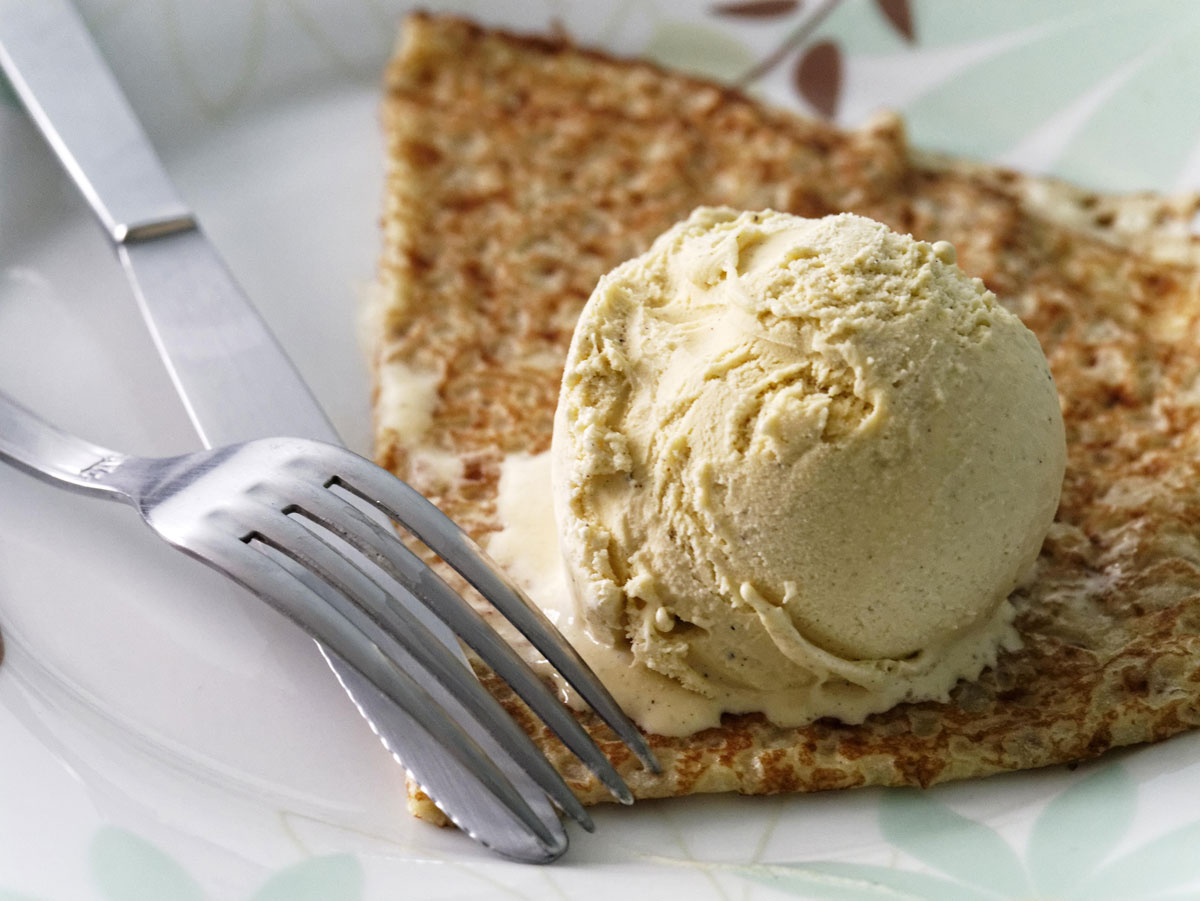
À la mode tarts. Max Straeten / morguefile.com
À la Mode literally means “in the fashion.”
In topic areas other than food, when someone says something is “à la mode”, it usually means that something is “in fashion” currently.
In the food sense, however, it is actually shorthand for “in the fashion (of.)” For instance, “tripes à la mode de Caen” means “tripe in the fashion of Caen (Normandy)” meaning, how it is the fashion to prepare tripe in Caen.
When you hear just “à la mode”, it means that over time the “de something” part got dropped off, or was never tacked on because everyone way back when knew what the fashion was. “Boeuf à la mode” (beef à la mode) for instance, is beef marinated in red wine then braised with onion and carrot, reflecting a fashion back in the first part of the 1700s.
In North America, “à la mode” is more likely to mean with ice cream, usually vanilla unless specified. Starting in the 1920s in America, you would see on menus “pie à la mode.”

À la mode crêpe. Max Straeten / morguefile.com
History Notes
“À la Mode” was introduced into English cooking as a standard expression by the 1653 book, “The French Cook”, a translation of Francois Pierre de la Varenne’s 1651 book, “Le Cuisinier François.”
53. Bouef à la mode: Battez le bien et le lardez avec de gros lard, puis le mettez cuire dans un pot avec bon bouillon, un bouquet, & toutes fortes d’espices & le tout estant bien consommé servez avec la sauce. — Francois Pierre de la Varenne. Le Cuisinier François. “Recipe #53: Bouef a la mode.” 1651. Page 50. (Ed: note that Varenne’s “Bouef a la mode” was a spiced beef rather than the later 1700s version.)

À la mode. Max Straeten / morguefile.com

